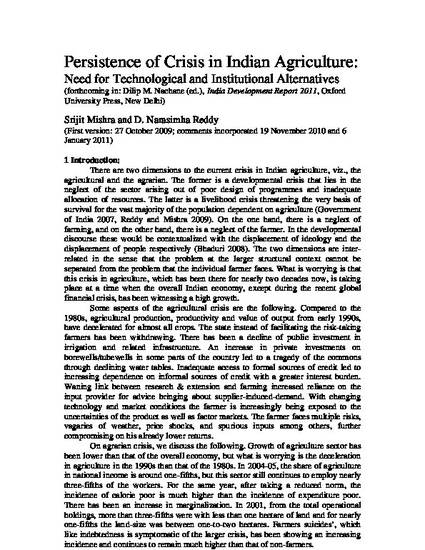
The crisis in Indian agriculture has two dimensions - agricultural developmental and agrarian livelihood. Some aspects of the agricultural crisis are decelertion in production, productivity and value of output from early 1990s in almost all crops. Withdrawal of the state from public investment in irrigation and related infrastructure, providing access to formal credit, and waning link between research & extension and farming. As a result, the farmer faces multiple risks, vagaries of weather, price shocks, and spurious inputs among others, further compromising on his already lower returns. On agrarian crisis, what is worrying is that the deceleration in agriculture happened when the economy as a whole was doing well, share of agriculture in income has been declining to less than one-fifths but it still has an employment share of nearly three-fifths, incidence of calorie poor is much higher than the incidence of expenditure poor, there has been an increase in marginalization. Farmers suicides’, which like indebtedness is symptomatic of the larger crisis, has been showing an increasing incidence and continues to remain much higher than that of non-farmers. There is need for technology that reduces costs and risks and of institutional structures to organize the farmers. This is a forthcoming paper.
- Agricultural developmental crisis,
- agrarian livilihood crisis,
- deceleration of agricultural production,
- indebtedness of farmers,
- marginalization of holdings,
- technology and institutional alternatives
